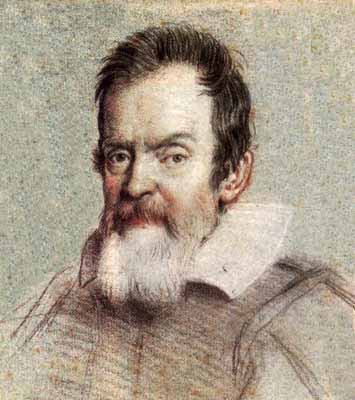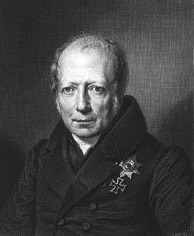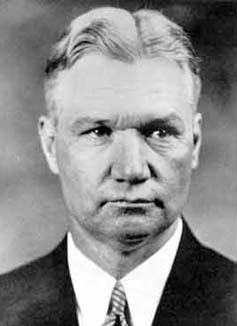- About MAA
- Membership
- MAA Publications
- Periodicals
- Blogs
- MAA Book Series
- MAA Press (an imprint of the AMS)
- MAA Notes
- MAA Reviews
- Mathematical Communication
- Information for Libraries
- Author Resources
- Advertise with MAA
- Meetings
- Competitions
- Programs
- Communities
- MAA Sections
- SIGMAA
- MAA Connect
- Students
- MAA Awards
- Awards Booklets
- Writing Awards
- Teaching Awards
- Service Awards
- Research Awards
- Lecture Awards
- Putnam Competition Individual and Team Winners
- D. E. Shaw Group AMC 8 Awards & Certificates
- Maryam Mirzakhani AMC 10 A Awards & Certificates
- Two Sigma AMC 10 B Awards & Certificates
- Jane Street AMC 12 A Awards & Certificates
- Akamai AMC 12 B Awards & Certificates
- High School Teachers
- News
You are here
External Influences on U.S. Undergraduate Mathematics Curricula: 1950-2000 - Pedagogy
Pedagogy: Cooperative Learning, IBL, Technology, and More
 |
 |
 |
 |
|
Early advocates of inquiry-based learning, top to bottom: Socrates (469-399 BCE), Galileo Galilei (1564-1642), Wilhelm von Humboldt (1767-1835), and Robert Lee (R.L.) Moore (1882-1974). (Photo sources: The Louvre via Wikimedia Commons, MacTutor Archive, Humboldt-Universität zu Berlin via Wikimedia Commons, MacTutor Archive, respectively.) |
At the end of our half-century (1950-2000), there was increasing interest in different ways of teaching. We shall argue that this partly reflected external forces. One can see this increased interest in one of Bressoud’s Launchings columns [7] where he reported on a 2011 MAA survey, Characteristics of Successful Programs in College Calculus, and noted that only 64% of those instructors surveyed agreed with the statement “Calculus students learn best from lectures, provided they are clear and well-prepared.” Fully 16% rejected that assertion with the remaining 20% evidently on the fence, or with some hair to split. In addition, various forms of technology were in use. For example 61% required students to use graphing calculators for out-of-class assignments. This survey took place a few years after the era we are writing about, but the attitudes reported surely did not develop overnight. We shall shortly present some data not handicapped by being outside the era.
In addition to reporting this data on attitudes toward teaching methods, Bressoud, a former president of MAA, has been outspoken in advocating alternatives to the lecture method [8]. One of the pedagogies arousing interest in the 1950-2000 era was cooperative learning, in which students work together in groups. According to [10], this teaching method scarcely existed in our colleges until the late 1960s. But by 1995, MAA found sufficient interest in it that it formed Project CLUME (Cooperative Learning in Undergraduate Mathematics) to provide information to faculty who wanted to try cooperative learning. In addition, MAA published a Mathematical Notes volume [10] on the topic.
Another style of pedagogy that has aroused interest is Inquiry-Based Learning (IBL), in which the student is treated as an investigator or inventor rather than a recipient of mathematical ideas. IBL made what was probably its most dramatic early appearance in mathematics teaching in the work of R. L. Moore (1882-1974), especially with graduate students. But imitation of Moore’s methods for undergraduates was slow to follow and we have no evidence of it before 1950. However, by 2007 advocates of various forms of IBL were able to found an on-line journal, The Journal of Inquiry-Based Learning in Mathematics.
Finally, toward the end of the 1950-2000 era there was a flood – no other word will do – of experimentation in using technology in mathematics instruction: clickers, calculators, various software packages, often combined with cooperative learning or inquiry-based learning. For a masterful survey of these technologies, as well as other tools used in mathematics teaching during the last two centuries, the reader should consult Tools of American Mathematics Teaching, 1800-2000, by Peggy Kidwell, David L. Roberts, and Amy-Ackerberg Hastings [24]. Through no fault of the authors, this excellent work focuses mostly on the variety of tools available rather than on actual usage in the classroom – data on usage of technology is hard to come by for the decades just before 2000.
To fill in some of the story on actual experimentation with alternative pedagogies before 2000, we did an analysis of NSF’s online database of the projects it has funded [45]. The database is incomplete for projects with starting dates before 1/1/1985, so we examined it for projects in the Division of Undergraduate Education (DUE) whose starting dates were in the range 1/1/1985 to 12/31/1999.
We entered a long search string containing titles of all courses found in Table A1 and the first 5 entries of Table A2 of the 1995 survey of the CBMS [26]. This list contains all undergraduate mathematics courses whose nationwide enrollment in 1995 is estimated to be at least 1000 by CBMS. Variants of titles were added to overcome the literalism of search technology. (For example, we added "Theory of Numbers" to augment the CBMS title “Number Theory” and we added “Elementary Functions” to augment “Precalculus”.) Our search string was a disjunction of 77 terms and returned 1021 NSF projects. We took a random sample of 100 of the projects and we read the abstracts and other available data for all 100. Of these, 70 projects had at least one principal investigator in a mathematics department. Each of these projects was examined to discern whether a distinctive form of pedagogy was an objective of the project (in addition, perhaps, to other objectives). We found that 62 of the 70 projects had some kind of distinctive pedagogical goal and, of these, 57 projects investigated a form of pedagogy in which technology played a part.
We do not believe that the American interest in alternative pedagogies, which grew substantially after 1950, can be attributed totally to factors within American mathematics. For one thing, the external factor of technology was clearly influential. But we believe that, at least for inquiry-based learning, some hard-to-identify factors concerning the broad social and intellectual climate were also involved.
One argument for such external factors is based on the observation that inquiry-based learning experienced an upsurge in many other fields and many other developed countries in the era from 1950 to 2000. For a review of recent implementations in many subjects throughout the English-speaking world, see Healey and Jenkins [20]. For a description of the 1960s upsurge in problem-based mathematics learning in Russia, see Karp and Vogeli [21]. It would be scientifically odd to explain the widespread increased interest in inquiry-based learning entirely by separate internal intellectual forces in the separate fields and countries. Likewise, we think it unlikely that interest in inquiry-based learning developed in mathematics for internal reasons and other fields simply copied this learning style from mathematics. The most likely hypothesis is that changes in the common intellectual and social climates of many diverse societies and academic communities were creating a convergence that influenced many toward trying inquiry-based pedagogy in the era from 1950 to 2000.
Another argument for factors outside of mathematics promoting inquiry-based learning is based on the long history of this teaching method. One can find it in the Socratic dialogues, in Galileo's writings, and in the ideas of Wilhelm von Humboldt in Germany in the early 19th century. In 1810, von Humboldt, describing the future University of Berlin, said [14]:
[U]niversities should treat learning as not yet wholly solved problems and hence always in research mode.
These examples could have inspired widespread emulation in undergraduate mathematics in the United States well before the 20th century, far beyond the remarkable but initially isolated example of R. L. Moore. But circumstances evidently needed to change first. Might those changes in circumstances have been internal to the mathematical community? It is hard to think of plausible mathematical candidates. By contrast, it is easy to think of external circumstances that might plausibly have played a role: matters such as increasing affluence, different practices in child-raising, the proliferation of electronic forms of entertainment, a larger percentage of the population attending college, the content and amount of research and advocacy emanating from schools of education and teacher’s colleges, periodicals such as the Journal for Research in Mathematics Education, etc. We cannot prove links to any of these factors, but judgment seems to argue that some were probably involved.
Walter Meyer (Adelphi University), "External Influences on U.S. Undergraduate Mathematics Curricula: 1950-2000 - Pedagogy," Convergence (August 2013), DOI:10.4169/convergence20130802




